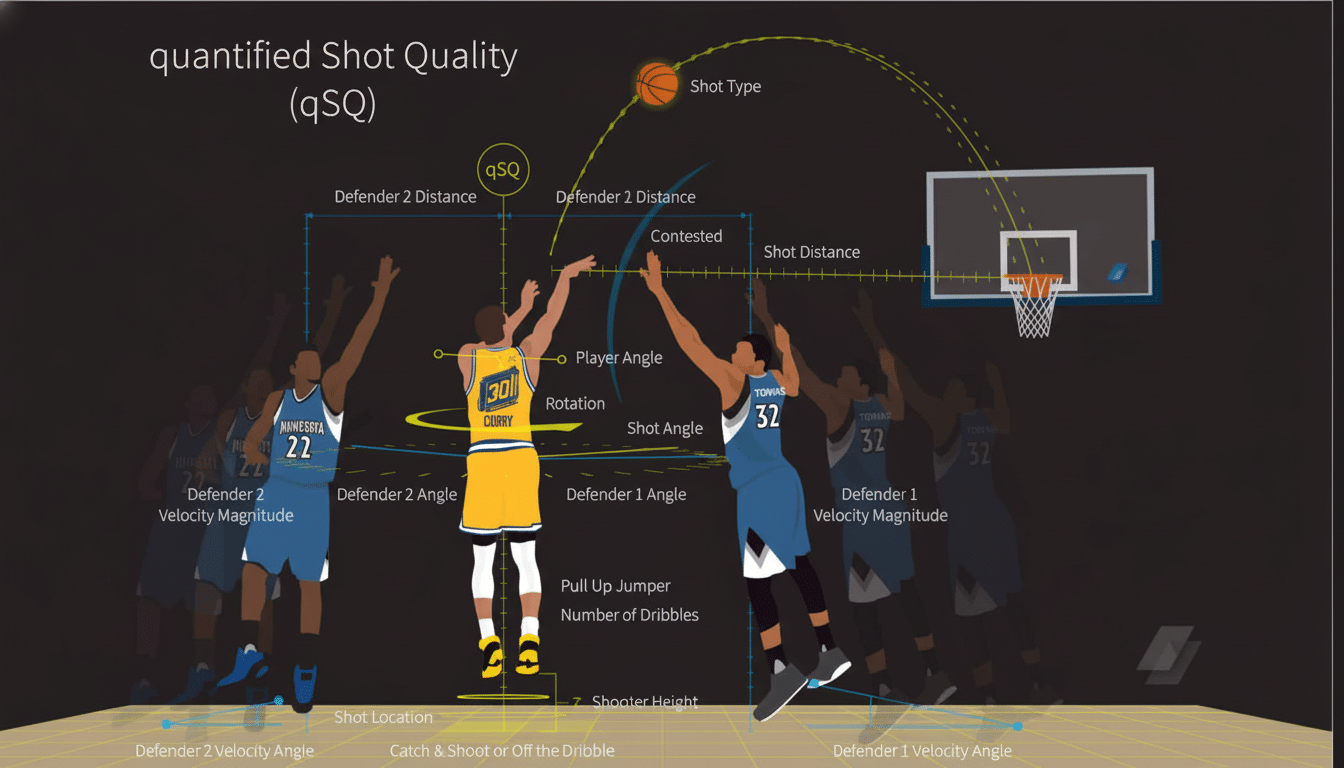On the Disrupt 2025 stage, Tristan Thompson handed in the playbook for product roadmaps to a future where AI is transforming performance, strategy and the fan experience. The NBA champion describes his venture, TracyAI, its development of predictive tools for athletes and teams — and then sketches a higher-level blueprint for athlete-led startups that go beyond endorsements and into actual operating roles.
AI as a Strategic Weapon in Modern Basketball
Basketball has been digitizing the court for a decade now. Optical tracking now exists in every arena, and the league’s wide partnership with Second Spectrum drove home how possession-level data can inform player development, matchup scheming and strategy. Thompson said the next leap is not more dashboards — but rather real-time decision support, turning torrents of data into timely guidance that coaches and players trust.

He talked about moving from descriptive metrics (what happened) to predictive ones (why it happened): expected possession value, injury risk signals based on cumulative load and context-specific shot quality as a function of game state. That path would dovetail with what performance staffs are already seeking to do with wearables and GPS systems offered by companies like Catapult and WHOOP, which are in widespread use across elite teams. The change now is one of latency — whether insights will arrive quickly enough to alter the outcome.
Inside TracyAI And Thompson’s Operating Thesis
TracyAI, as Thompson described it, focused on three layers: computer vision that would parse player movement, forecasting models that would surface probabilities coaches can act on and explainability that makes those predictions useful in the heat of competition. Or on the practical side, flagging a defender’s tired legs that resulted in a lateral drop and suggesting a specific substitution, or auto-clipping video showing a guard how a coverage tweak could flip the expected points in either direction over the next 14 trips downcourt.
Equally important is the design of constraints. He stressed privacy and integrity — no biometric data would be collected without a player’s express consent, and there needed to be a clear break from the betting markets. That stance parallels clauses in the NBA’s collective bargaining agreement that place limits on how wearable data can be collected and prevent it from being used in contract negotiations. Thompson put it simply: if athletes do not own their data, the tools will not build trust.
His startup portfolio reflects an operator’s lens. He mentioned work with World Mobile on community-scale connectivity to bridge the digital divide, and advisory work with AxonDAO on AI-driven medical research, inspired by his brother’s struggles with epilepsy. On the fan front, he cofounded Basketball Fun — an experiential platform for live short-form data-rich clips and immersive digital experiences. His projects have been featured on Forbes, CNBC Crypto World, and CoinDesk. He most recently had the privilege of speaking about athlete-led innovation at a leading Bitcoin industry conference.
Athletes as Startup Builders and Operators
The change Thompson embodies is not limited to one venture. In recent years, athlete investors and operators are moving somewhat upstream — from being passive checks to building and scaling. Venture activity around athlete-founded funds has been growing, according to PitchBook and other market trackers, and numerous examples exist: Serena Williams at Serena Ventures, Kevin Durant and Rich Kleiman at Thirty Five Ventures and Stephen Curry’s SC30. The connection here is using domain expertise, audience trust and a performance culture to hit product-market fit more quickly.
College sports are also serving up the pipeline. Name, image and likeness rules created avenues for younger athletes to try products, develop partnerships and collect user feedback before turning pro. Thompson framed this as a benefit to builders in sports tech: being able to work from true problem statements and against a captive set of early adopters who won’t pussyfoot around telling you what works and what doesn’t.

Data Rights, Ethics, and Model Risk in Sports AI
Many of the hardest problems are not just technical. If transparent modeling practices are a good counter to bias, Thompson continued, now is certainly the time for it — not least because of talent evaluation (where historical information was encoded systemically as a blind spot). He referenced nascent AI governance frameworks that organizations like IEEE were working on, model risk methodologies borrowed from finance — audit trails, robustness against adversarial data and human-in-the-loop review of high-stakes decisions.
He also recognized the slippery slope synthetic media could create in sports. Generative tools can tailor highlights and automate film breakdowns, but they also present authenticity concerns. Meanwhile, industry initiatives such as Coalition for Content Provenance and Authenticity’s standards on secure watermarking and labeling were referenced as a pragmatic way forward to ensure athletes and fans are protected yet creative experimentation remains possible.
What It Means for Fans and Teams Across Leagues
Increasingly, fans want depth without friction. Surveys of firms like Nielsen indicate an increasing appetite for stats with context, content tailored for you and me, and AI is one way to provide that at scale — from a box score surfaced by AI to another article filtered to our biases. For teams, the potential is additive: marginal gains in shot selection, substitution timing and workload management that accrue over an 82-game season.
Thompson boiled his test down to one simple measure: conversion from insight to action. The best sports AI, he said, will be judged less by how well it works in the lab than by results that can be measured — fewer soft-tissue injuries; more efficient lineups; better player development. That is the scoreboard he wants TracyAI and athlete-founders up against.
So at a moment when Disrupt 2025 has been bringing together founders, investors and operators, Thompson’s message resonates more sharply than ever.
The future of sports tech will be created by those who know both the locker room and the lab — and are brave enough to weave innovation through data rights, ethics and trust. If that balance can obtain, then the next generation of athletes will not just play the game; they’ll need to help reimagine it.

